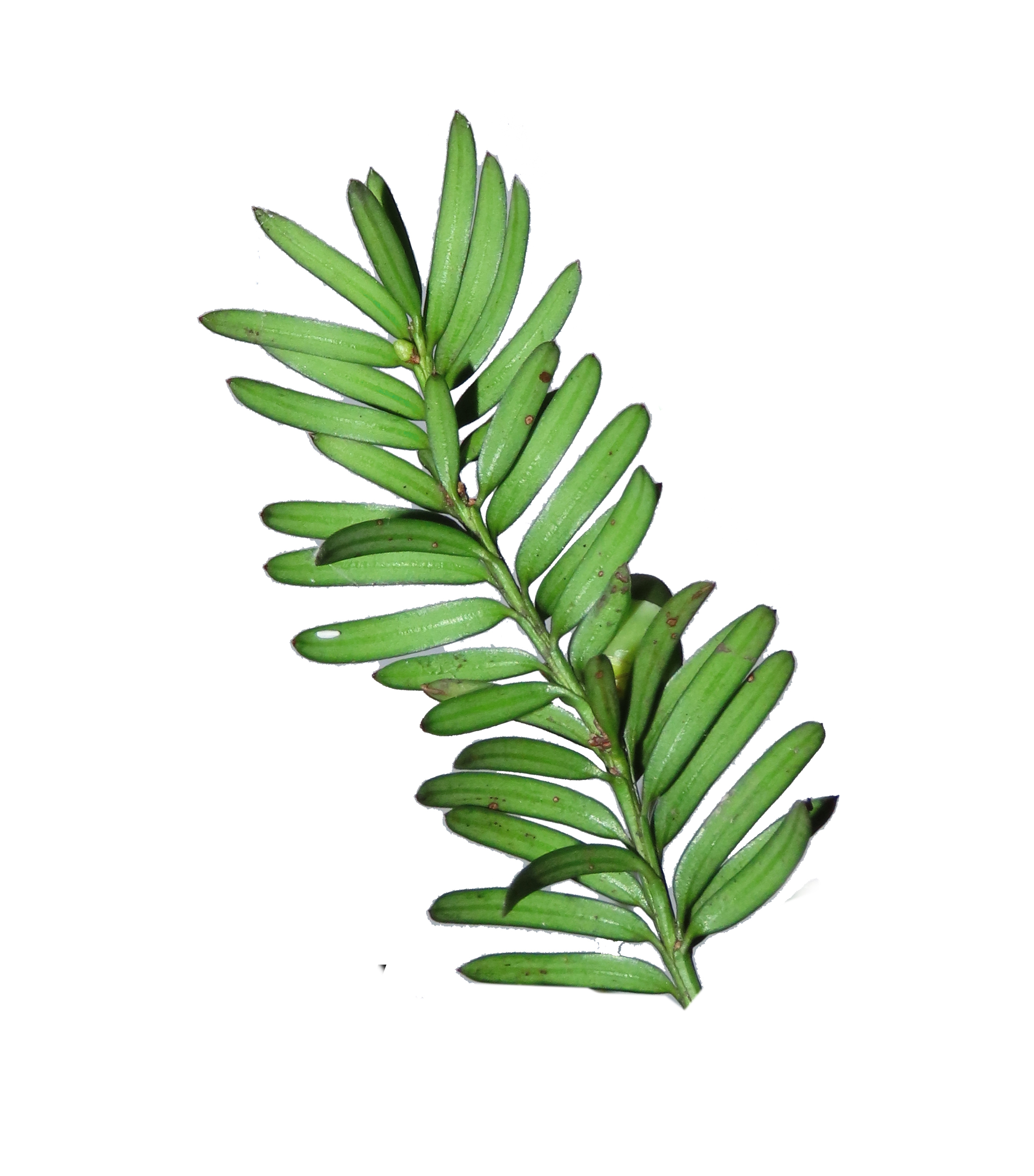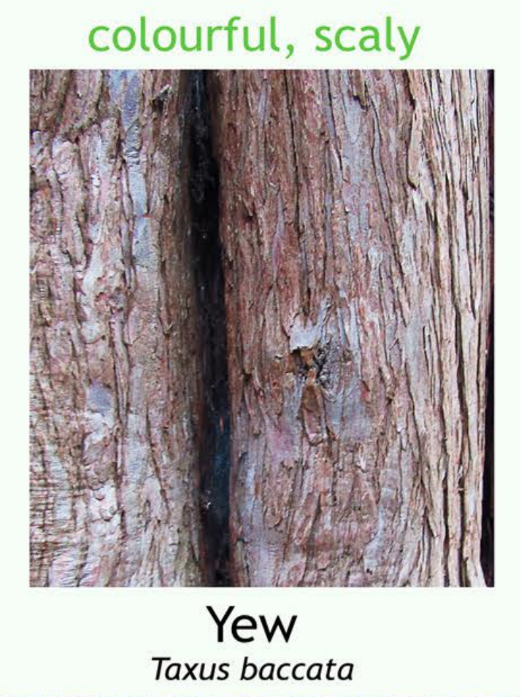A native evergreen tree species in Ireland, commonly found in woodlands, hedgerows, and churchyards.
Recognising the Yew Tree:
-
Foliage: The foliage of the Yew tree consists of dark green needles that are arranged spirally around the branches. The needles are flat, pointed, and slightly glossy, with a distinctive arrangement that gives the tree a dense, bushy appearance.
-
Bark: The bark of the Yew tree is reddish-brown to greyish-black and has a smooth texture when young, becoming rougher and more fissured with age. It may develop patches of peeling bark and resinous deposits over time.
-
Cones: Yew trees produce small, globular cones known as arils, which are usually found on female trees. The cones are surrounded by fleshy, berry-like structures that contain highly toxic seeds.
-
Shape: Yew trees have a slow-growing, conical or columnar growth habit, with a dense, compact canopy and branches that often droop gracefully towards the ground.
-
Habitat: Yew trees are commonly found in woodlands, hedgerows, churchyards, and other semi-shaded habitats. They prefer well-drained soils and can tolerate a wide range of soil types and pH levels.


5 Interesting Facts about the Yew Tree:
-
Longevity: Yew trees are among the longest-lived tree species in Europe, with some specimens estimated to be over 2,000 years old. Their slow growth rate and ability to regenerate from old wood contribute to their longevity and resilience.
-
Cultural Significance: Yew trees have been revered since ancient times for their association with death, rebirth, and immortality. They are often found in churchyards and burial grounds, where they symbolize eternity and the cycle of life.
-
Toxicity: While the fleshy arils of the Yew tree are sweet and edible, the seeds contained within them are highly toxic and can be fatal if ingested. All parts of the tree, including the bark, foliage, and seeds, contain toxic alkaloids known as taxanes, which can cause cardiac arrest and respiratory failure in humans and animals.
-
Medicinal Uses: Despite its toxicity, the Yew tree has been used medicinally for centuries. Taxanes extracted from the bark and foliage of the tree have been used to treat cancer, as they have potent anti-cancer properties. However, these compounds must be carefully extracted and purified to avoid toxicity.
-
Wildlife Habitat: Yew trees provide valuable habitat and food for a variety of wildlife species. While the foliage is toxic to most animals, certain birds, such as blackbirds and thrushes, feed on the arils and disperse the seeds through their droppings. Additionally, the dense canopy of Yew trees provides shelter and nesting sites for birds and small mammals.
Uses of the Yew Tree:
-
Landscape Tree: Yew trees are often planted as ornamental trees in parks, gardens, and churchyards for their attractive foliage, dense canopy, and historical significance. They are valued for their year-round greenery and ability to tolerate pruning and shaping.
-
Timber: Yew wood is exceptionally strong, hard, and durable, making it prized for use in furniture making, cabinetry, carving, and turnery. The wood has a fine grain and rich, reddish-brown color, making it highly sought after for high-quality woodworking projects.
-
Medicinal Uses: Despite its toxicity, compounds extracted from the bark and foliage of the Yew tree have been used in the development of cancer-fighting drugs, such as paclitaxel (Taxol) and docetaxel (Taxotere). These drugs are used in the treatment of various forms of cancer, including breast, lung, and ovarian cancer.
Contribution to Biodiversity:
-
Habitat Provider: Yew trees contribute to biodiversity by providing habitat and food for a variety of wildlife species in woodlands, hedgerows, churchyards, and other semi-shaded habitats. While the foliage is toxic to most animals, certain birds feed on the arils and disperse the seeds through their droppings, contributing to the dispersal of Yew trees in the landscape.
-
Cultural and Ecological Value: Yew trees have cultural and ecological value as ancient and long-lived species that play a significant role in shaping landscapes and providing habitat for wildlife. Their presence in churchyards and burial grounds adds to their cultural significance and contributes to the sense of history and continuity in these landscapes.
-
Genetic Diversity: Yew trees contribute to genetic diversity within tree populations, as they are capable of reproducing through both sexual and vegetative means. This genetic diversity is important for the long-term survival and adaptation of Yew populations to changing environmental conditions.
In summary, the Yew tree is recognisable by its dark green needles, reddish-brown bark, fleshy arils, and slow-growing conical or columnar growth habit. It holds cultural significance, provides valuable resources for wildlife, and contributes to biodiversity and ecosystem health in Ireland's woodlands, hedgerows, and churchyards. Additionally, it serves as a landscape tree, timber resource, and potential source of medicinal compounds, supporting diverse populations of wildlife and enhancing ecosystem resilience in natural and cultural landscapes.
Images taken from the beautiful posters created by Phil Barnett and you can download these and/or purchase other great designs from his online shop.
